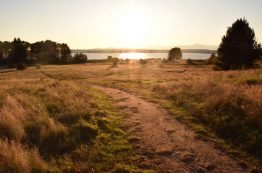Researchers at the University of Washington share their expertise on artificial intelligence and data science in “The Age of A.I.,” an online documentary produced and released this winter by YouTube. The series narrated by Robert Downey Jr. looks at how AI could affect everything from health care to the search for extraterrestrial life. The seventh episode, titled “Saving the World One Algorithm at a Time,” features the UW-based Pacific Northwest Seismic Network.
Read more at UW News »UW Quad cherry blossoms expected to peak last week of March
Note: Thousands of people usually visit campus each spring to see the cherry blossoms. The University is asking people to avoid coming to campus this year to comply with orders by Public Health – Seattle & King County and Gov. Jay Inslee that prohibit gatherings of more than 50 people as our region combats the spread of COVID-19. Stay tuned for virtual options to enjoy the blossoms this year, including UW Video’s live feed of the Quad below.
Read more at UW News »Thinning, prescribed burns protected forests during the massive Carlton Complex wildfire
The 2014 Carlton Complex wildfire in north central Washington was the largest contiguous fire in state history. In just a single day, flames spread over 160,000 acres of forest and rangeland and ultimately burned more than 250,000 acres in the midst of a particularly hot, dry summer. The wildfire, driven by strong winds and explosive growth, was unprecedented in how it burned the landscape, destroying more than 300 homes in Washington’s Methow Valley.
Read more at UW News »Wildness in urban parks important for human well-being
As metropolises balloon with growth and sprawl widens the footprint of cities around the world, access to nature for people living in urban areas is becoming harder to find. If you’re lucky, a pocket park might be installed next to a new condominium complex on your block, or perhaps a green roof tops the building where you work downtown. But it’s unusual to find places in a city that are relatively wild — even though our evolutionary history suggests we need interactions with wild nature to thrive.
Read more at UW News »New radar technology sheds light on never-before-seen Antarctic landscape
17,000 years ago, Seattle was covered by an ice sheet that stood over 3,000 feet tall (for reference, the current tallest building in Seattle, the Columbia Tower, is just under 937 feet). As the ice advanced and eventually receded, it carved massive valleys, mountains and lakes into the earth to create the glaciated land and seascape we recognize today. These landscapes not only remind us of the area’s ancient glacial past but also provide tools to understand and predict future patterns for glaciers.
Read more »





